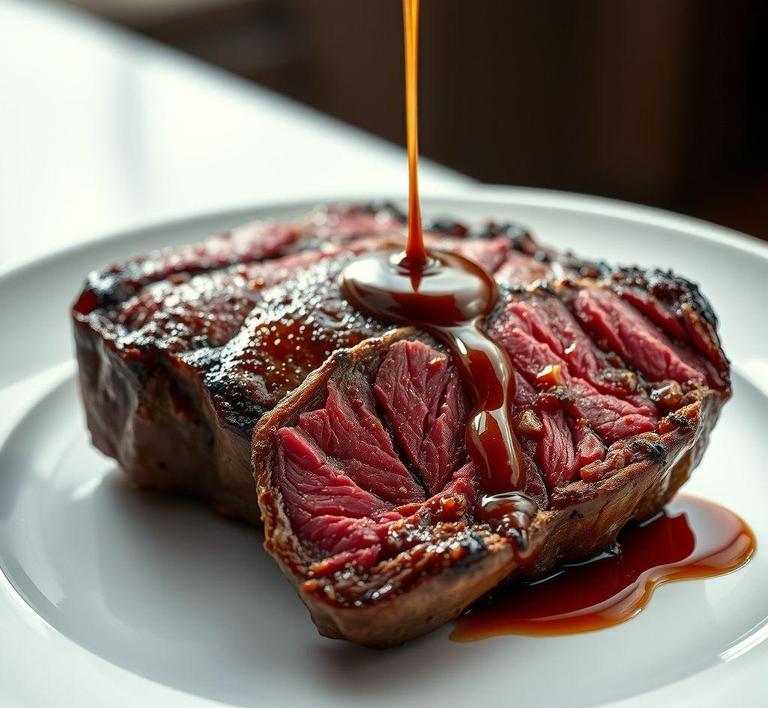Refreezing beef is a topic that sparks a lot of debate, but when done properly, it can be a great way to extend the shelf life of your meat without compromising its quality. Whether you’ve thawed more beef than you need or didn’t get to cook it in time, understanding the right way to refreeze beef can save you both time and money. However, it’s important to note that there are some rules you need to follow to ensure safety and preserve the taste and texture of the beef. From knowing when it’s okay to refreeze to tips on how to properly store it, this guide will walk you through everything you need to know about refreezing beef with confidence!
Can You Refreeze Beef?

When it comes to handling meat, especially beef, one of the most common concerns that arise is whether it’s safe to refreeze it after it has been thawed. The short answer? Yes, you can refreeze beef, but there are important considerations to ensure that both its safety and quality are not compromised.
The process of freezing beef slows down bacterial growth, which helps preserve it. However, once beef is thawed-whether through refrigeration, microwave, or at room temperature-the microbial activity can begin to increase again, especially if it is left in the danger zone (between 40°F and 140°F or 4°C to 60°C). Refreezing beef means you need to be cautious about how it’s been thawed and how long it’s been out.
The general rule of thumb is that beef can be safely refrozen if it was thawed in the refrigerator. The refrigerator keeps the beef at a temperature low enough to prevent bacterial growth, so it is still safe to freeze again, as long as it hasn’t been sitting out for more than a couple of hours. If the beef was thawed using a quicker method like microwaving or in cold water, it’s better not to refreeze it unless it was cooked in the process. Refreezing raw beef that’s been thawed outside the fridge can increase the risk of contamination.
How To Refreeze Beef?
Refreezing beef requires careful attention to prevent any potential loss of flavor, texture, or even safety. If you’ve thawed beef and are considering refreezing it, here’s a step-by-step guide on how to do it right:
-
Ensure The Beef Was Thawed Properly
- Refrigerator Thawing: The best and safest method for thawing beef is in the refrigerator, where the temperature is kept consistently below 40°F (4°C). If the beef was thawed this way and hasn’t been sitting out for more than a couple of hours, it’s safe to refreeze.
- Quick-Thawing Methods: If you used faster methods, like the microwave or cold water, ensure that the beef was cooked immediately after thawing. Refreezing raw beef after these methods is not recommended unless cooked, as bacteria can multiply rapidly at higher temperatures.
- Check for Signs of Spoilage: Before refreezing, make sure that the beef is still safe to eat. Smell it for any sour or rancid odors, check the color (it should remain a bright red or purplish hue), and inspect its texture. If you find any signs of spoilage, it’s best to discard the beef.
- Cook the Beef First (Optional but Recommended): If you’re concerned about the safety of refreezing raw beef, an effective solution is to cook the beef before freezing. This will kill any harmful bacteria that might have started growing during the thawing process, making it safer to refreeze afterward. Cooking also helps lock in flavors and maintain texture.
- Packaging Properly: When refreezing, be sure to wrap the beef tightly to prevent freezer burn, which can degrade its taste and texture. Use airtight packaging like heavy-duty freezer bags or vacuum-sealed bags. If you’re refreezing cooked beef, consider portioning it into meal-sized amounts for convenience.
- Label and Date: Always label your packages with the date of refreezing. Even when beef is refrozen properly, it’s important to keep track of how long it has been frozen. It’s best to consume refrozen beef within 4 to 6 months to ensure its quality.
- Freeze Quickly: Place the beef in the coldest part of the freezer, ideally at 0°F (-18°C) or lower. This helps ensure that the beef freezes quickly and evenly, which can help preserve its quality.
Quality Impact
Refreezing beef can have an impact on its quality, particularly when it comes to texture and flavor. The main factor at play is the formation of ice crystals during the freezing and thawing process. When beef is frozen, water inside its cells forms ice crystals. As the meat thaws, these ice crystals melt, and the water can leach out of the cells. When the beef is refrozen, new ice crystals form, which can cause more moisture loss and damage the muscle fibers.
Here’s what you can expect in terms of quality impact when you refreeze beef:
- Texture Changes: Refrozen beef may lose some of its tenderness. The repeated freezing and thawing process leads to more moisture loss, and the muscle fibers can become more compact, making the meat tougher or chewier. While this may not be as noticeable in ground beef, steaks, and roasts might become less enjoyable if refrozen multiple times.
- Loss of Juiciness: Beef that’s been refrozen is likely to lose some of its juiciness, especially if it’s cooked. The moisture loss can result in a dryer texture when it’s reheated or cooked again.
- Flavor Deterioration: Beef that is refrozen may experience a decrease in flavor. The extended freezing period can cause the meat to lose some of its original taste, especially if it’s been exposed to air in the packaging. Additionally, freezer burn-a condition where the meat dries out and becomes discolored-can impair the flavor and texture of the beef.
- Nutrient Degradation: While the nutritional value of beef remains largely intact through freezing and refreezing, there can be minor degradation of vitamins (like B vitamins) and fats over time. However, this is generally a minor concern unless the beef has been stored for a long period.
While you can refreeze beef, it’s important to do so with care. The safety of refreezing largely depends on how the beef was thawed and how long it has been out of the freezer. Always ensure that the beef has been thawed in the refrigerator, and avoid refreezing beef that has been left out too long or thawed using quick methods unless cooked immediately.
However, it’s crucial to keep in mind that while it may be safe to refreeze beef, the quality may suffer. The texture, flavor, and juiciness of the beef can all be affected by the process of freezing and thawing. For the best results, consider cooking the beef before freezing it again or using it in dishes where texture is less important (like stews or ground meat dishes).
Lastly, remember to package beef properly to avoid freezer burn and label it with the date so that you can keep track of how long it’s been stored. By taking these steps, you can minimize the impact of refreezing on the quality and ensure that your beef remains safe and delicious for future meals.
Is It Safe To Refreeze Beef?
Refreezing beef is a topic that stirs debate in the culinary world. While it may seem like a convenient option when dealing with leftover or thawed beef, it’s important to understand the safety and quality factors involved. In general, it is safe to refreeze beef as long as it has been handled properly. The key concern here is the thawing process. Beef should be thawed in the refrigerator, not on the countertop, as this ensures that bacteria do not have an opportunity to proliferate. If beef has been thawed under safe conditions, it can be refrozen without significant risk of foodborne illness. However, refreezing beef after it has been thawed at room temperature is not recommended because bacteria can multiply rapidly in that environment.
There are certain things to consider when deciding whether to refreeze beef:
- Time and temperature control: If beef was left at room temperature for more than two hours, refreezing it could cause food safety issues.
- How it was thawed: Beef should ideally be thawed in the refrigerator or under cold water. If it was thawed in the microwave, it should be cooked before refreezing.
- Quality: Refreezing beef that has been thawed can affect its texture and taste. While it may still be safe, the quality may suffer after the second freezing.
In summary, as long as proper thawing and handling practices were followed, refreezing beef is generally safe, but it’s best to use it quickly after doing so to minimize quality degradation.
Signs That Beef Should Not Be Refrozen
While it’s safe to refreeze beef in many cases, there are clear signs that indicate it should not be refrozen. These signs typically relate to how the beef has been handled or the condition of the beef itself. Here’s a look at the most common indicators that you should avoid refreezing beef:
- Unpleasant odor: If the beef has developed a sour or off smell, this indicates that bacterial growth has likely occurred, making it unsafe to refreeze. A bad smell is a strong indicator that the beef is no longer fit for consumption, whether it’s been frozen or thawed.
- Slimy texture: Beef that feels slimy or sticky to the touch has likely started to spoil. The sliminess is a result of bacterial growth, which thrives in moist environments. If you encounter this texture, it’s a definite sign that the beef should be discarded rather than refrozen.
- Discoloration: Beef that has turned a grayish or brownish color is another warning sign. Fresh beef should have a rich red hue, and discoloration can indicate that it has been exposed to air for too long or has begun to deteriorate. Although discoloration does not necessarily mean the beef is unsafe, it often signals that its quality has declined, and refreezing could result in further degradation.
- Extended thawing time: If the beef has been left out at room temperature for more than two hours, it should not be refrozen. Bacteria can multiply rapidly when beef is thawed in warm conditions, creating a dangerous food safety risk. This is particularly true for beef that has been thawed using methods other than the refrigerator or cold water.
- Freezer burn: While freezer burn doesn’t necessarily make beef unsafe to eat, it does affect the texture and flavor. If beef has visible signs of freezer burn, such as dry, discolored patches on the surface, it may be best to avoid refreezing it. While it’s still technically safe to eat, the quality will be compromised.
Common Refreezing Mistakes
Refreezing beef can be convenient, but many people make mistakes that can result in compromised food safety or diminished quality. Let’s explore some of the most common missteps:
- Thawing Beef at Room Temperature: One of the most common mistakes is thawing beef at room temperature. This creates the ideal environment for bacteria to grow, especially if the beef is left out for more than two hours. It’s essential to thaw beef in the refrigerator, where temperatures remain stable and cold. If you’re in a hurry, you can use the microwave or a cold-water bath, but beef should never be left out to thaw at room temperature.
- Repeated Thawing and Refreezing: Each time beef is thawed and refrozen, it undergoes changes in texture, flavor, and moisture retention. If you repeatedly thaw and refreeze beef, it will become tough, dry, and flavorless. Additionally, each cycle increases the risk of bacterial contamination. It’s important to only thaw and refreeze beef once, and even then, it should be used within a short period after refreezing.
- Not Packaging Beef Properly: One of the most significant errors people make when refreezing beef is improper packaging. Beef should be tightly wrapped in plastic wrap or aluminum foil and then placed in an airtight freezer bag. If beef is not properly sealed, it will suffer from freezer burn, which results in a loss of moisture and affects texture and flavor. Vacuum-sealing is an excellent option for keeping beef fresh in the freezer for a longer period.
- Not Cooking Thawed Beef Before Refreezing: If you’ve thawed beef that was originally frozen, it’s important to cook it before refreezing. Beef that has been thawed in the microwave or with cold water should be cooked immediately to ensure that any bacteria that might have developed during the thawing process are killed. Refreezing uncooked beef that has been thawed can lead to the spread of harmful bacteria.
- Not Labeling Meat Before Freezing: Many people make the mistake of not labeling beef before freezing it, which can lead to confusion later on. If you’re refreezing beef, be sure to label it with the date and whether it was originally frozen or thawed. This helps you keep track of how long the beef has been in storage, preventing it from being kept for too long.
Tips And Tricks
Refreezing beef doesn’t have to be a tricky process. Here are some tips and tricks to ensure you do it safely and maintain the quality of your beef:
- Use a Freezer Thermometer: Always make sure your freezer is at 0°F (-18°C) or lower. This temperature will keep the beef frozen safely. Using a thermometer helps you ensure that your freezer is functioning properly and that the beef stays at a safe temperature.
- Label and Date Packages: As mentioned earlier, labeling is critical when freezing beef. Be sure to mark the date on the packaging so that you know exactly when it was frozen. This will help you avoid keeping it for too long. A good rule of thumb is to use beef within 3-6 months of freezing.
- Portioning Beef: Before freezing, consider portioning the beef into smaller amounts that you’ll likely use in one sitting. This way, you won’t need to thaw and refreeze the entire piece, reducing the risk of quality loss. It also makes it easier to cook smaller portions when needed.
- Use Vacuum-Sealing for Longer Storage: Vacuum-sealing beef before freezing can help it last much longer. This method removes air from the packaging, preventing freezer burn and preserving the beef’s flavor and texture for up to a year or more.
- Thawing Safely: If you’re refreezing beef, make sure it is thawed safely first. The refrigerator is the safest place to thaw beef, but if you need to thaw it quickly, you can use the microwave or a cold-water bath. After thawing, be sure to cook the beef right away if it was thawed with water or a microwave.
Conclusion
Refreezing beef is not inherently unsafe, but there are several critical factors to consider to ensure both food safety and the quality of the beef. If handled correctly, beef can be refrozen without significant issues. The key is to ensure that the beef is thawed safely, not left at room temperature for long periods, and wrapped tightly to avoid freezer burn. Recognizing the signs that beef should not be refrozen-such as unpleasant odors, slimy textures, or discoloration-will help you avoid making a mistake. Additionally, avoiding common errors like repeated thawing and refreezing or improper packaging will keep the beef safe and delicious.
By following these tips and tricks, such as using proper storage methods and keeping track of thawing times, you can safely enjoy refrozen beef without compromising on taste or safety. In the end, though refreezing beef might be convenient, the best practice is to use beef within the recommended time frame to enjoy it at its highest quality.

